Automotive
Canadian tariffs on Chinese EVs should look like the United States’, not Europe’s
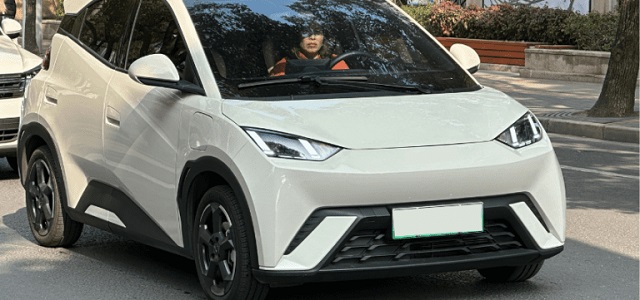
From the Macdonald Laurier Institute
By Heather Exner-Pirot
It is clear that China’s green manufacturing subsidies are not merely levers to promote their domestic economy at the expense of their competitors, but part of a larger strategic plan to control parts of the global energy and transportation system.
China is now, beyond a doubt, engaged in dumping and subsidizing a range of clean technologies to manipulate global markets. The remaining question is: How should Canada respond?
The Finance Minister’s consultations on China’s unfair trade practices in electric vehicles is welcome, if belated. Canada should closely follow the United States’ lead on this matter, and evaluate the extent to which other Chinese products, from lithium-ion batteries to battery components, should also be sanctioned.
The New Trio
A key plank of China’s economic growth strategy is manufacturing and exporting the “new trio”: solar photovoltaics, lithium-ion batteries, and electric vehicles. These are high value-add, export-oriented products that China is hoping can compensate for domestic economic weakness driven by a property market crisis, poor demographics, and insufficient consumer demand.
To solidify its role in green technology manufacturing, the Chinese government has provided enormous industrial subsidies to its firms; far higher than those of western nations. According to analysis by Germany’s Kiel Institute, the industrial subsidies in China are at least three to four times – or even up to nine times – higher than in the major EU and OECD countries.
Washington-based think tank CSIS conservatively estimates industrial subsidies in China were at least 1.73 percent of GDP in 2019. This is equivalent to more than USD $248 billion at nominal exchange rates and USD $407 billion at purchasing power parity exchange rates – higher than China’s defense spending in the same year.
On top of state subsidies, Chinese green technology manufacturing companies also benefit from preferential access to critical mineral supply chains (many aspects of which China dominates and manipulates the global market), weak labour and environmental standards, and economic espionage (including stealing technology from western firms and using Chinese-made products to gather intelligence from their western consumers). This green tech espionage includes Chinese-made electric vehicles which are widely suspected of collecting users’ data and sending it back to China in ways that violate their privacy and security.
It is clear that China’s green manufacturing subsidies are not merely levers to promote their domestic economy at the expense of their competitors, but part of a larger strategic plan to control parts of the global energy and transportation system.
European and American Response
In response to these blatantly egregious practices, both the European Commission and United States have recently announced tariffs on Chinese-made electric vehicles.
The European Commission announced their tariffs on July 4, 2024, following a nine-month anti-subsidy investigation. Individual duties were applied to three prominent Chinese producers: BYD (17.4%); Geely (19.9%); and SAIC (37.6%).
Other Battery Electric Vehicle (BEV) producers in China, which cooperated in the investigation but were not sampled, are subject to a 20.8% duty. Non-cooperating companies are subject to a 37.6% duty.
The United States policy was announced on May 14, 2024, and is both more comprehensive and more punitive than the European Commission’s. It covers not only electric vehicles, which face an increase in tariffs from the previous 25% to 100% as of August 1, 2024, but lithium-ion batteries (from a 7.5% to 25% tariff) and battery parts (from a 7.5% to 25% tariff). Natural graphite and permanent magnets will also face a tariff of 25%, starting in 2026.
Canada’s Response
Minister Freeland’s determination that Canada “does not become a dumping ground” for subsidized Chinese-made EVs, and commitment that Canada “will not stand” for China’s unfair trade practices, is very welcome.
To that end, Canada’s tariff policy on Chinese-made EVs should closely match the United States’, rather than Europe’s.
Canada’s auto industry is highly integrated with the United States, and our EV and battery supply chain, to the extent consumers will demand them, will be no different. Official Washington is seized with the threat China poses to the liberal world order and their position atop the global hierarchy. The United States will have little tolerance for Canada as a back door for Chinese-made EVs and battery parts. The growth and penetration of Chinese-made EV imports in Canada from 2022 to 2023 – an increase of 2500% year over year, now representing 25% of our imported EVs – shows that this is not a theoretical problem, but an existing one.
A soft touch on Chinese EV tariffs would likely create worse economic consequences for Canada in the North American context – in terms of impact to our domestic auto manufacturing industry, extensive battery supply chain investments, and CUSMA renegotiations – than it would confront from China, though these may indeed be painful.
For all these reasons, Canada should extend tariffs to lithium-ion batteries and battery parts as well, as the United States has done. This is fully with precedent. Canada has already applied extensive duties to Chinese-made photovoltaics and wind towers, and has put heavy investment restrictions on Chinese ownership of critical minerals production and miners in Canada.
Long-term Thinking
Free trade is a cornerstone of the liberal world order. It has improved the material well-being of billions of people. Restrictions on trade should not be taken lightly.
But Chinese dumping, subsidies, and market manipulation mean that the global market is not free for many critical minerals, EVs, solar panels, wind towers, lithium-ion batteries, and other green technology components. Canada cannot ignore that fact for a perceived short-term gain from cheaper products.
Just as Europe learned that relying on Russia for cheap natural gas was expensive, relying on China for our energy transition will not move Canada to a lower carbon energy system easier, faster or cheaper. It will impose different costs that Canadians will pay in a multitude of ways.
This may disappoint those that prioritize renewables and EV deployment over national security and domestic economic growth. The good news is that Canada has good options that satisfy climate goals as well. Canada is rich in oil, gas, uranium, and water. We are independent in fossil fuels, nuclear and hydroelectric energy. Let us build on those strengths and invest in green technologies that leverage them, including carbon capture, utilization and storage (CCUS), third and fourth generation nuclear reactors, pumped storage hydropower, and hydrogen.
Canada needs to focus on decarbonization efforts in areas in which we can both be energy independent and protect Canadian consumers and workers from unfair trade practices. To do this, Canada should apply appropriately punitive anti-dumping subsides on Chinese-made EVs, lithium-ion batteries, and battery parts.
Heather Exner-Pirot is director of energy, natural resources and environment at the Macdonald-Laurier Institute.
Automotive
New federal government should pull the plug on Canada’s EV revolution

From the Fraser Institute
During his victory speech Monday night, Prime Minister Mark Carney repeated one of his favourite campaign slogans and vowed to make Canada a “clean energy superpower.” So, Canadians can expect Ottawa to “invest” more taxpayer money in “clean energy” projects including electric vehicles (EVs), the revolutionary transportation technology that’s been ready to replace internal combustion since 1901 yet still requires government subsidies.
It’s a good time for a little historical review. In 2012 south of the border, the Obama administration poured massive subsidies into companies peddling green tech, only to see a vast swath go belly up including Solyndra, would-be maker of advanced solar panels, which failed so spectacularly CNN called the company the “poster child for well-meaning government policy gone bad.”
One might think that such a spectacular failure might have served as a cautionary tale for today’s politicians. But one would be wrong. Even as the EV transition slammed into stiff headwinds, the Trudeau government and Ontario’s Ford government poured $5 billion in subsidies into Honda to build an EV battery plant and manufacture EVs in Ontario. That “investment” came on top of a long list of other “investments” including $15 billion for Stellantis and LG Energy Solution; $13 billion for Volkswagen (or $16.3 billion, per the Parliamentary Budget Officer), a combined $4.24 billion (federal/Quebec split) to Northvolt, a Swedish battery maker, and a combined $644 million (federal/Quebec split) to Ford Motor Company to build a cathode manufacturing plant in Quebec.
How’s all that working out? Not great.
“Projects announced for Canada’s EV supply chain are in various states of operation, and many remain years away from production,” notes automotive/natural resource reporter Gabriel Friedman, writing in the Financial Post. “Of the four multibillion-dollar battery cell manufacturing plants announced for Canada, only one—a joint venture known as NextStar Energy Inc. between South Korea’s LG Energy Solution Ltd. and European automaker Stellantis NV—progressed into even the construction phase.”
In 2023, Volkswagen said it would invest $7 billion by 2030 to build a battery cell manufacturing complex in St. Thomas, Ontario. However, Friedman notes “construction of the VW plant is not scheduled to begin until this spring [2025] and initial cell production will not begin for years.” Or ever, if Donald Trump’s pledge to end U.S. government support for a broad EV transition comes to pass.
In the meantime, other elements of Canada’s “clean tech” future are also in doubt. In December 2024, Saint-Jérome, Que.-based Lion Electric Co., which had received $100 million in provincial and government support to assemble batteries in Canada for electric school buses and trucks, said it would file for bankruptcy in the United States and creditor protection in Canada. And Ford Motor Company last summer scrapped its planned EV assembly plant in Oakville, Ontario—after $640 million in federal and provincial support.
And of course, there’s Canada’s own poster-child-of-clean-tech-subsidy failure, Northvolt. According to the CBC, the Swedish battery manufacturer, with plans to build a $7 billion factory in Quebec, has declared bankruptcy in Sweden, though Northvolt claims that its North American operations are “solvent.” That’s cold comfort to some Quebec policymakers: “We’re going to be losing hundreds of millions of dollars in a bet that our government in Quebec made on a poorly negotiated investment,” said Parti Québécois MNA Pascal Paradis.
Elections often bring about change. If the Carney government wants to change course and avoid more clean-tech calamities, it should pull the plug on the EV revolution and avoid any more electro-boondoggles.
Automotive
Major automakers push congress to block California’s 2035 EV mandate
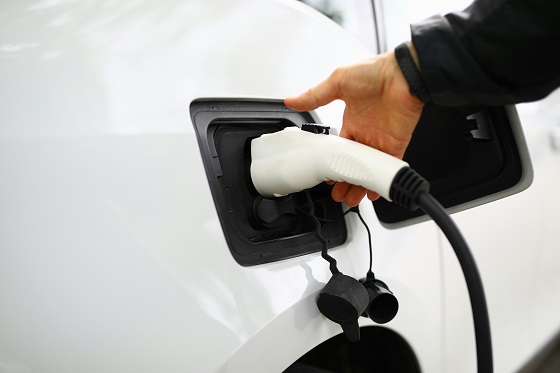
 MxM News
MxM News
Quick Hit:
Major automakers are urging Congress to intervene and halt California’s aggressive plan to eliminate gasoline-only vehicles by 2035. With the Biden-era EPA waiver empowering California and 11 other states to enforce the rule, automakers warn of immediate impacts on vehicle availability and consumer choice. The U.S. House is preparing for a critical vote to determine if California’s sweeping environmental mandates will stand.
Key Details:
-
Automakers argue California’s rules will raise prices and limit consumer choices, especially amid high tariffs on auto imports.
-
The House is set to vote this week on repealing the EPA waiver that greenlit California’s mandate.
-
California’s regulations would require 35% of 2026 model year vehicles to be zero-emission, a figure manufacturers say is unrealistic.
Diving Deeper:
The Alliance for Automotive Innovation, representing industry giants such as General Motors, Toyota, Volkswagen, and Hyundai, issued a letter Monday warning Congress about the looming consequences of California’s radical environmental regulations. The automakers stressed that unless Congress acts swiftly, vehicle shipments across the country could be disrupted within months, forcing car companies to artificially limit sales of traditional vehicles to meet electric vehicle quotas.
California’s Air Resources Board rules have already spread to 11 other states—including New York, Massachusetts, and Oregon—together representing roughly 40% of the entire U.S. auto market. Despite repeated concerns from manufacturers, California officials have doubled down, insisting that their measures are essential for meeting lofty greenhouse gas reduction targets and combating smog. However, even some states like Maryland have recognized the impracticality of California’s timeline, opting to delay compliance.
A major legal hurdle complicates the path forward. The Government Accountability Office ruled in March that the EPA waiver issued under former President Joe Biden cannot be revoked under the Congressional Review Act, which requires only a simple Senate majority. This creates uncertainty over whether Congress can truly roll back California’s authority without more complex legislative action.
The House is also gearing up to tackle other elements of California’s environmental regime, including blocking the state from imposing stricter pollution standards on commercial trucks and halting its low-nitrogen oxide emissions regulations for heavy-duty vehicles. These moves reflect growing concerns that California’s progressive regulatory overreach is threatening national commerce and consumer choice.
Under California’s current rules, the state demands that 35% of light-duty vehicles for the 2026 model year be zero-emission, scaling up rapidly to 68% by 2030. Industry experts widely agree that these targets are disconnected from reality, given the current slow pace of electric vehicle adoption among the broader American public, particularly in rural and lower-income areas.
California first unveiled its plan in 2020, aiming to make at least 80% of new cars electric and the remainder plug-in hybrids by 2035. Now, under President Donald Trump’s leadership, the U.S. Transportation Department is working to undo the aggressive fuel economy regulations imposed during former President Joe Biden’s term, offering a much-needed course correction for an auto industry burdened by regulatory overreach.
As Congress debates, the larger question remains: Will America allow one state’s left-wing environmental ideology to dictate terms for the entire country’s auto industry?
-
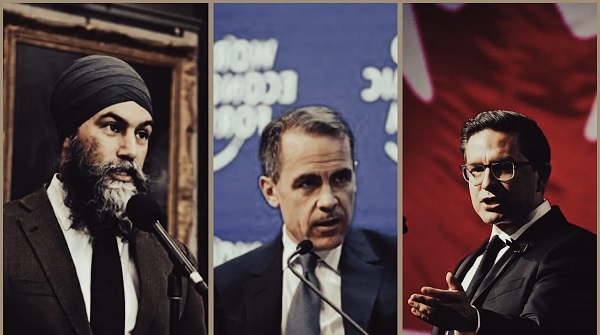
 2025 Federal Election2 days ago
2025 Federal Election2 days agoNDP Floor Crossers May Give Carney A Majority
-

 Alberta14 hours ago
Alberta14 hours agoIt’s On! Alberta Challenging Liberals Unconstitutional and Destructive Net-Zero Legislation
-
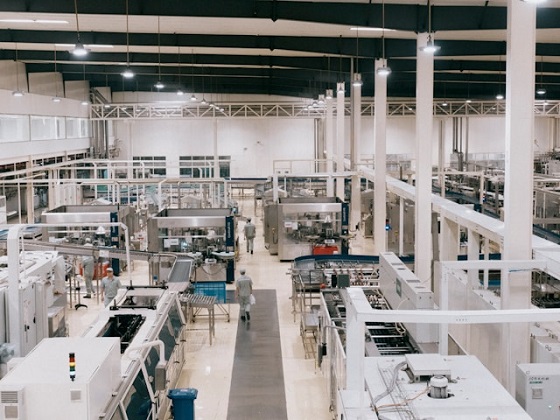
 Business1 day ago
Business1 day agoChina’s economy takes a hit as factories experience sharp decline in orders following Trump tariffs
-

 Automotive1 day ago
Automotive1 day agoNew federal government should pull the plug on Canada’s EV revolution
-

 Mental Health2 days ago
Mental Health2 days agoHeadline that reads ‘Ontario must pay for surgery to give trans resident both penis and vagina: appeal court’ a sign of the times in Canada
-
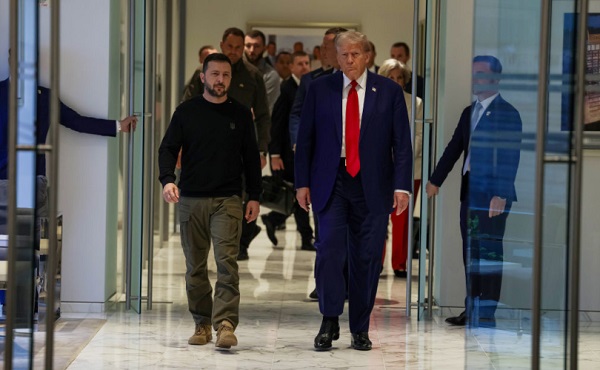
 Business1 day ago
Business1 day agoScott Bessent says U.S., Ukraine “ready to sign” rare earths deal
-

 Alberta2 days ago
Alberta2 days agoPreston Manning: Canada is in a unity crisis
-
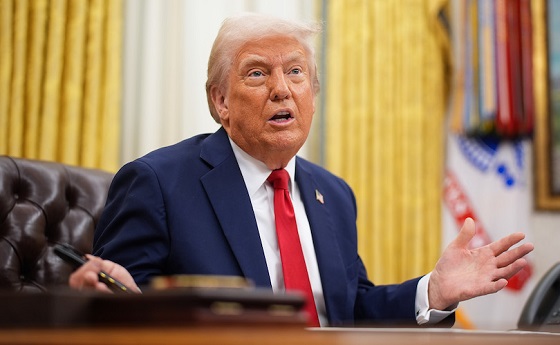
 Business1 day ago
Business1 day agoTrump’s bizarre 51st state comments and implied support for Carney were simply a ploy to blow up trilateral trade pact



